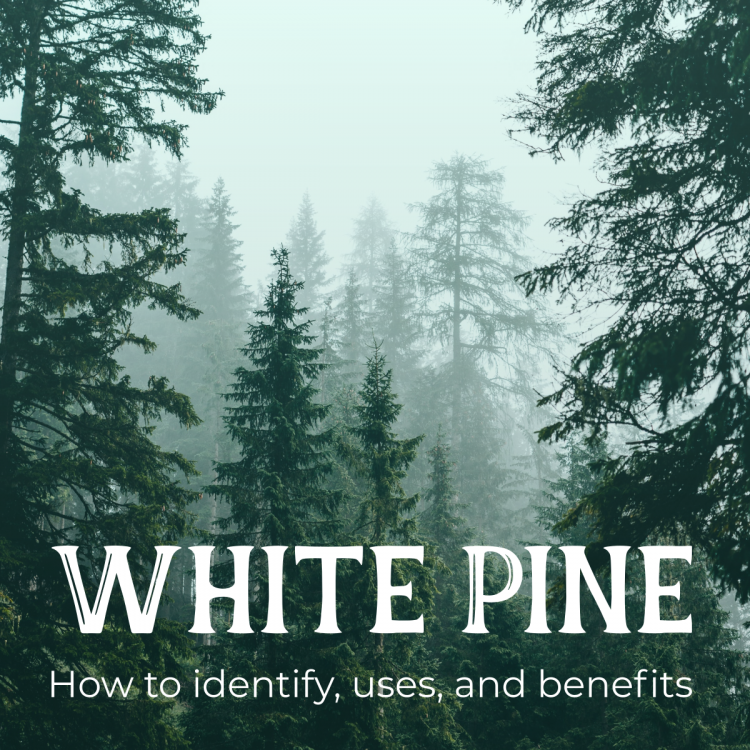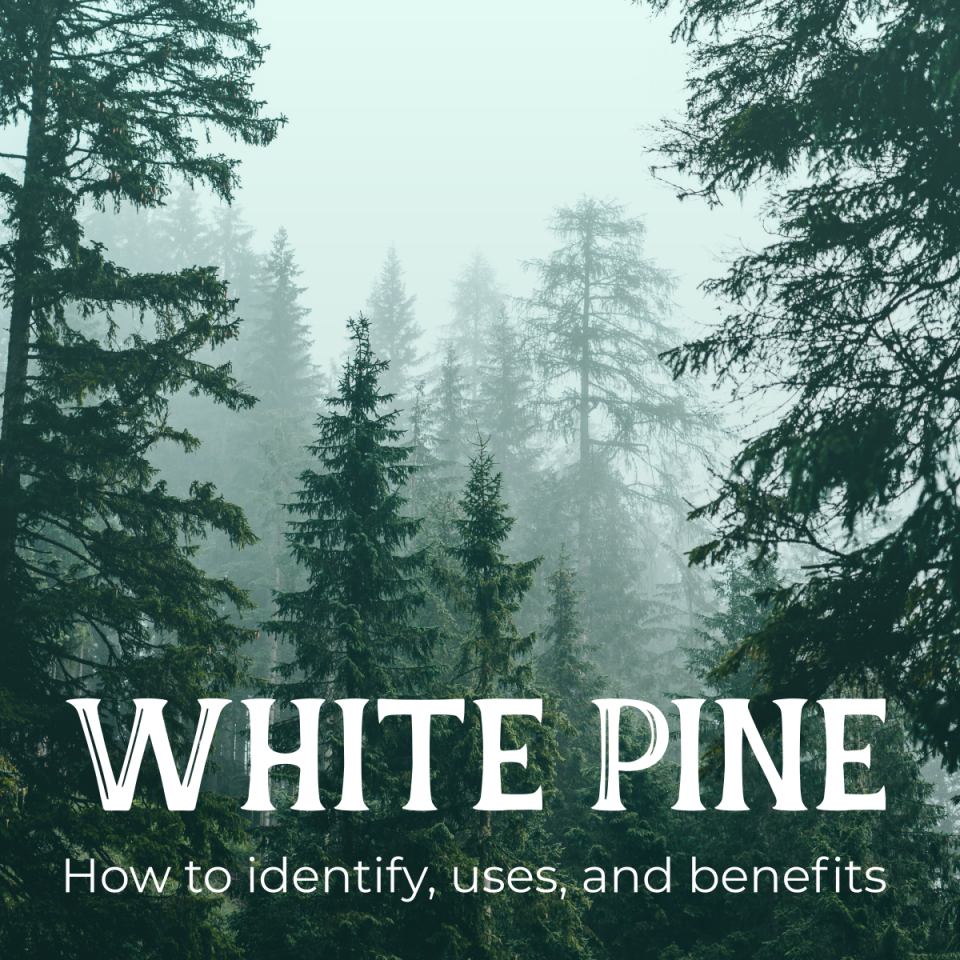Hey there everyone, I've put together some information about identifying white pine in the wild and some of the uses and benefits of it's needles and cones.
Did you know white pine trees have many benefits and uses, and can be really good for you?
In order to tell if you have a white pine tree, first you have to establish weather you have pine or fir. Pine has groupings of needles whereas fir has the needles growing right off the branch.
White pine is a fairly easy pine tree to identify because of the unique long needles with 5 needles per cluster, which is also called a fascicle. The needles range from 2-6 inches long.
White pine needles are extremely rich in vitamin C and A. White pine needles actually have more vitamin c than oranges!
These trees can get huge! White pine trees can grow up to 250 ft tall and live upwards of 500 years. The bark on the white pine is rougher towards the base of the tree and smoother towards the top and on the branches.
The most popular use for white pine needles is making pine needle tea. To make pine needle tea you need to gather a handful of needles, cut them up into small pieces, and put them into a tea strainer or cloth tea bag. Brew your pine needles in boiling water for 3-5 minutes and let it cool enough to drink. You can also add in lemon juice and honey to make a sweeter tea.
The young male cones, when firm and green, can be boiled and eaten like a vegetable.
You can also use the pine needles as mulch, bedding for chickens or other animals, and for making woven baskets.
You can make oil out of the pine cones and needles as well as vinegar to be used in place of balsamic vinegar or to make dressings, and cough syrup.
Male pine cones are small, yellow, and clustered at the base of the current year’s growth, whereas female pine cones hang downward from branches at 3 to 8 inches long.
Before eating or cooking with any wild edible, remember to do your own research and be sure that it is the right plant.
Not all pine needles are considered safe to eat or make tea out of. You should avoid pine needle tea for children and if you are pregnant or nursing. Ponderosa Pine, Norfolk Island Pine, and Yew pine are considered inedible and should not be consumed.
Ponderosa pine, Lodgepole pine, and Monterey pine are also considered dangerous to livestock, and such should not be used in bedding or mulch.
Do you have white pine on your property? Let me know if any of these uses for white pine are helpful to you!


